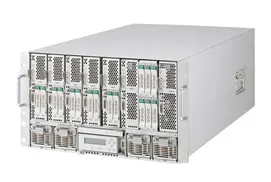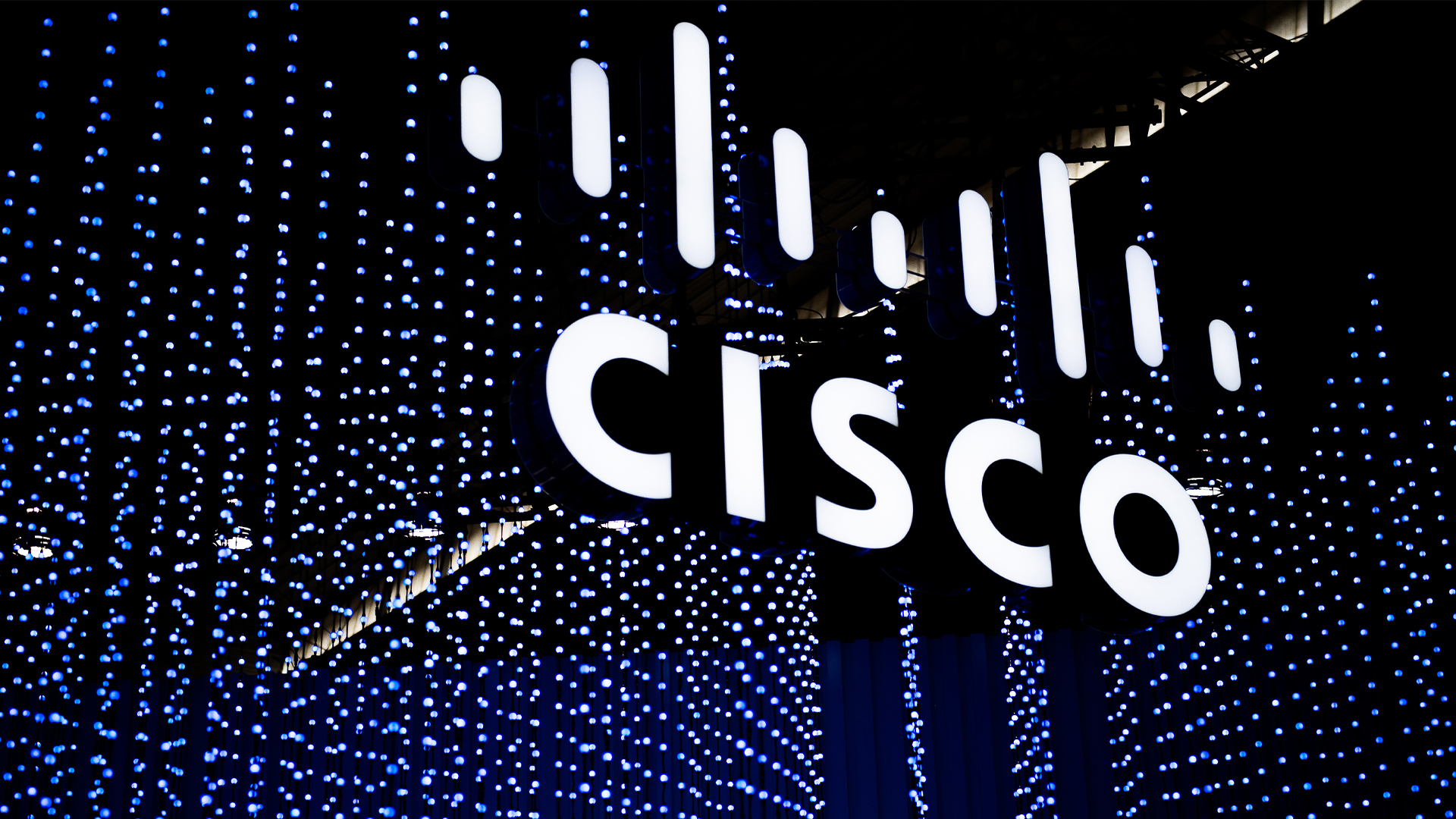EXCLUSIVE: NEC SIGMABLADE-M Blade Server

NEC's new blade server scores very well on value and expansion capabilities and supports a reasonable range of Xeon server blades. Redundancy options are plentiful but build quality is unsophisticated and management and monitoring features aren't a patch of those offered by HP's BladeSystem c-Class.

Despite being launched over five years ago it's only now that the blade server is coming on strong as many businesses start to see new ways they can offer benefits over standard rack servers. The market is heating up as serious concerns about power, cooling and maxed out utility supplies make blade servers look a more cost-effective and environmentally friendlier alternative to dense rack server installations.
Not a lot of people know this but NEC Computers has had a presence in the blade server market for over four years. However, it has never promoted its products aggressively - certainly not the to same level as IBM which is currently spending a king's ransom advertising its BladeCenter H in any form of media that comes to mind. NEC's first attempt came with its Express5800/420Ma and here we take an exclusive look at its successor - the provocatively named SIGMABLADE.
Standing at 6U high, the SIGMABLADE-M chassis is 2U higher than its predecessor and supports up eight server blades. The first thing of note is its rude construction as although it's undeniably a sturdy beast it lacks any of the elegance of HP's BladeSystem c-Class (see https://www.itpro.com/servers/labs/95397/hp-blade-system-cclass.html). NEC also offers a SIGMABLADE-H chassis which stands at 10U and along with the 120 range can also use NEC's 140Ba-10 double height blade which supports Intel's 7300 Xeon MP quad-core processors. Underneath the server blade slots are small bays for up to four hot-plug power supplies. These are an unusual design as at nearly 80cms long they run the entire depth of the chassis. A raised section half way down mates with the chassis' power bus and the far end presents a standard three pin socket.
At the centre of this lower section is a panel combining a DVD drive, a couple of USB ports and an LCD display. It's not as clever as HP's Insight Display as it only provides basic chassis and blade information and allows you to swap the KVM port and integral DVD drive assignment to a selected server blade. However, it can be flipped out to reveal a couple of slots behind that take NEC's enclosure manager (EM) cards. These offer web access to the chassis and adding two EM cards provides redundancy. They can each be accessed directly via their serial or Ethernet ports or you can use the rear mounted module which also provides KVM access to the server blades.
At the rear you have room for up to five fan modules and connectivity options are reasonably good as below the fan bays are six slots for which NEC offers a choice of hot-plug modules. The review system was supplied with a basic Gigabit pass-through module which links up with both Ethernet ports on each blade. You also have a 16-port Layer 2 Gigabit switch, an 8-port 4Gbps FC module and an FC pass-through module as well. Server blade choices are more modest than those from HP and IBM as NEC currently offers three choices of Xeon based blades supporting dual- and quad-core processors. The 120Bb-6 blades in the review system each had a pair of 1.6GHz Xeon 5110 processors teamed up with 1GB of memory. Storage is handled by a RAID mezzanine card at the rear which is cabled through to a small backplane servicing the pair of hot-swap SFF SAS drive bays. It's a tidy enough solution but the drive bay does sit on top of the DIMM sockets and will need to be unscrewed and removed if you want to upgrade memory. NEC also offers a diskless blade which is designed to boot from a SAN and is aimed at storage consolidation applications. Of more interest is its storage blade as from a hardware perspective this is similar to HP's AiO SB600c solution. The 120Bb-m6 combines a standard diskless Xeon blade with a second that supports up to six hot-swap SFF SAS hard disks.
For remote management the EM card web interface provides a basic status screen showing the server blades, fans and power supplies and you can directly access each server blade's own web interface where you can perform power controls, reset them, shutdown their OS, remotely control them and assign virtual boot media.
Next up is NEC's ESMPRO utility which provides remote access to the server blades and starts off with a discovery routine that scans the network and lists all SNMP devices. Once you've installed a local ESMPRO agent then any NEC server can be queried directly from the map for hardware inventory and performance graphs of selected components. Each server blade has an embedded IPMI chip which can be accessed using the bundled DianaScope utility. This offers a basic web interface which allows you to monitor server activity, remotely control them using the VNC software, shutdown or restart their OS and schedule power cycles.
Stacking up NEC's remote management tools against the likes of HP's Onboard Administrator web interface and Insight Control Center Edition shows clearly what you're missing as the HP alternative is much slicker. Furthermore, NEC doesn't provide the same power management and monitoring tools as HP and IBM. Although not supplied with the review sample, NEC does also offer its SigmaSystemCenter administration software which is designed to streamline OS and patch deployment across multiple blades, automate server recovery operations and balance workloads across selected servers.
Having seen nearly every blade server on the market we can safely say that HP's BladeSystem c-Class is the benchmark by which we judge all others. However, this quality does come at a price and this is one area where NEC's SIGMABLADE offers a strong alternative as the system on review looks particularly good value. The new storage server blade is a welcome addition and component redundancy is extensive but we did find the standard administration facilities unsophisticated and lacking in power management tools.
Verdict
NEC's new blade server scores very well on value and expansion capabilities and supports a reasonable range of Xeon server blades. Redundancy options are plentiful but build quality is unsophisticated and management and monitoring features aren't a patch of those offered by HP's BladeSystem c-Class.
6U rack chassis - 8 blade slots, 2 x 1250W hot-plug power supplies (max. 4), 4 x hot-plug fans (max. 5), EM card with Ethernet and KVM (max. 2), six module expansion slots, 16-port Gigabit pass-through blade. 2 x 120Bb-6 server blades each with: 2 x 1.6GHz Xeon 5110, 1GB 667MHz DDR2 upgradeable to 16GB, LSI Logic MegaRAID card, 2 x 73GB Seagate Savio 10K.2 SAS hard disks in hot-swap carriers. NEC ExpressBuilder software suite bundled. Warranty - 3 years on-site.
Get the ITPro daily newsletter
Sign up today and you will receive a free copy of our Future Focus 2025 report - the leading guidance on AI, cybersecurity and other IT challenges as per 700+ senior executives
Dave is an IT consultant and freelance journalist specialising in hands-on reviews of computer networking products covering all market sectors from small businesses to enterprises. Founder of Binary Testing Ltd – the UK’s premier independent network testing laboratory - Dave has over 45 years of experience in the IT industry.
Dave has produced many thousands of in-depth business networking product reviews from his lab which have been reproduced globally. Writing for ITPro and its sister title, PC Pro, he covers all areas of business IT infrastructure, including servers, storage, network security, data protection, cloud, infrastructure and services.
-
 Cisco names Oliver Tuszik as global sales chief
Cisco names Oliver Tuszik as global sales chiefNews Cisco has announced the appointment of Oliver Tuszik as its new executive vice president of global sales, who replaces Gary Steele.
By Daniel Todd Published
-
 AI will chew through the same amount of energy as Japan by 2030
AI will chew through the same amount of energy as Japan by 2030News The energy demand of AI data centers will top that of Japan by the end of the decade, new research shows – and that’s providing that energy grids can even keep up.
By Nicole Kobie Published
-
 Nvidia braces for a $5.5 billion hit as tariffs reach the semiconductor industry
Nvidia braces for a $5.5 billion hit as tariffs reach the semiconductor industryNews The chipmaker says its H20 chips need a special license as its share price plummets
By Bobby Hellard Published